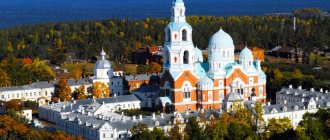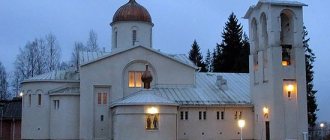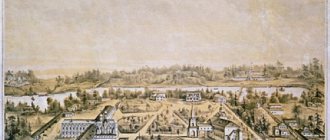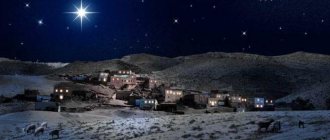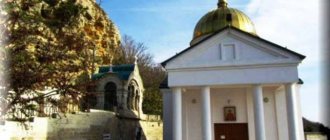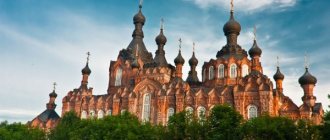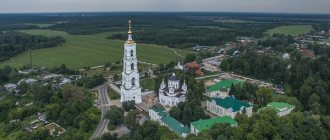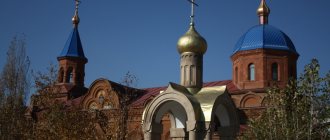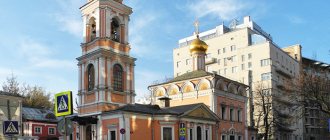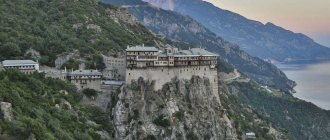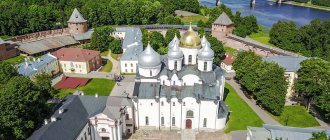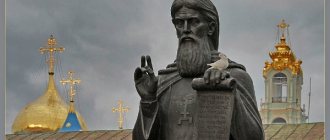It is not for nothing that the island of Valaam is called holy. In this place, the spiritual cleansing of a person occurs. Even the air heals on the archipelago. It heals not only the body, but also the soul. From here you come back as if you were born again. Masterpieces created by human hands are harmoniously combined with natural masterpieces here. About one hundred thousand tourists and pilgrims visit the archipelago every year, and their number is constantly growing.
Valaam archipelago
Karelian pearl
Valaam is located in Karelia in the north of Lake Ladoga. Officially, it is assigned to the Sortavala district. This is the largest island of the Valaam archipelago. In addition to it, the archipelago includes more than fifty islands. The length of Valaam is just under 10 kilometers, the width is about eight kilometers. The nearest shore is 22 kilometers away. From Sortavala by water to the archipelago – 42 kilometers.
Ladoga
The island has two large inland lakes and nine tiny forest lakes, which in Karelia are called lambushki. The shores of the islands are rocky. The highest cliffs reach a height of 58 meters above sea level. Despite its northern location, the local flora is very diverse - 480 plant species grow here! Coniferous forests predominate, where 65% is pine.
This is not to say that the climate on the archipelago is very harsh. February is the coldest month. At the same time, its average temperature is minus 5.8 degrees. The warmest month is July with an average temperature of plus 17.5 degrees. Most precipitation falls in July–September. Spring comes at the end of March. Snow falls in the first half of December. By mid-February, the ice in the lake becomes so strong that people travel from Sortavala to the island by car. Navigation lasts from the beginning of May to the end of September. This is the best time to visit Valaam.
Recommendations for tourists
The island of Valaam, where the monastery complex has long been located, annually attracts not only numerous pilgrims, but also ordinary tourists who want to enjoy the beauty of the archipelago and the unique architecture of its buildings. You can go there either as part of an organized excursion or on your own.
A visit to Valaam will give you an extremely positive experience if you follow some recommendations:
- Usually the excursion including the road from Sortavala takes about 7 hours, so the best time to visit the island is in the morning.
- Valaam, like the whole of Karelia, is unpredictable in terms of weather, so even in summer it is better to have a windbreaker and warm clothes with you.
- If you wish, you can take a container with you and collect holy water for free.
- Despite the fact that photography is prohibited on the temple grounds, no one will prevent you from photographing groves, hills and lakes. The local flora deserves to be captured as a keepsake.
- Since this is not a tourist place, you should not expect a high level of service and a large number of amenities.
- To fully get acquainted with the monastery, it is better to take a tour, since a haphazard walk will not give the same impressions. Most of them involve a sufficient amount of personal time for relaxation.
- If you want to stay on Valaam for several days, it is recommended to take care of this in advance, since there are very few places to accommodate tourists and pilgrims.
The island of Valaam, home to a large number of unique historical sites, deserves to be visited at least once. The main thing is to maintain a respectful attitude towards church ministers and monks, to treat their work with respect and calm.
A holiday on Valaam will give you a lot of positive impressions and memorable moments.
Article design: Vladimir the Great
Greek trace
In ancient times, on the island there was a temple of Veles and Perun - that was the name of the main gods of the ancient Slavs. No one knows the exact date of the appearance of the Christian monastery on the archipelago. Apparently, in those days the monks did not keep records. According to one version, the monastery was founded after the Baptism of Rus'. Other researchers give later dates. It is known for certain that in the 10th century monks already lived on Valaam. The founders of the monastery are considered to be the Greek missionaries Sergius and Germanus. Historians agree that the monastery on Mount Tabor appeared in the period from the 11th to the 12th centuries.
Worship cross
Since the island was located on the border of Russia and Sweden, the Swedes repeatedly landed on Valaam and destroyed settlements. For this reason, no medieval settlements have survived here. The oldest building is considered to be the Annunciation Chapel in Monastyrskaya Bay, built at the end of the 18th century. From the beginning of the 17th to the beginning of the 18th century there was a period of the so-called “Swedish desolation”, when the Swedes completely destroyed the monastery and the monastery ceased to exist. It was revived only at the beginning of the 18th century by decree of Peter the Great.
Monk's grave at the Fraternal Cemetery
Valaam, like a magnet, always attracted outstanding people. The archipelago was visited by Emperors Alexander I and Alexander II. The beauty of the island inspired artists Kuindzhi and Shishkin. Picturesque landscapes are probably reflected in the works of the writer Leskov and poet Tyutchev, composers Glazunov and Tchaikovsky. The legendary island was not ignored by the chemist Mendeleev and the anthropologist Miklouho-Maclay. In the 19th century, the Frenchman Alexandre Dumas reached these places.
During the Soviet period, monastic life fell into decline. In the middle of the last century, a home for disabled people of war and labor was built here, and then a closed boarding school with special regime. Only in 1989 did the revival of the monastery begin. Currently, about 150 inhabitants are permanent residents of the northern monastery.
Valaam's Donkey
This phraseological unit has its roots in biblical legends, and means a person who suddenly spoke, who was previously considered closed and silent.
The very story about Valaam and his donkey reflects religious strife between peoples. The sorcerer Balaam from Mesopotamia was called by the king of Moab to destroy his opponents, but God Yahweh saved his people by putting human speech into the mouth of a donkey - she suddenly spoke and detained Balaam. Then God Yahweh put blessings on the people of Israel into the mouth of the repentant Balaam.
This phraseological unit is quite used in classical Russian literature, for example in F.M. Dostoevsky in The Brothers Karamazov, Fyodor Pavlovich calls his illegitimate son, lackey Smerdyakov, “Valaam’s Donkey” after his sudden passionate speech at the table.
Western Gate of the Archipelago
Life on the archipelago is concentrated in its western part. The heart is the Spaso-Preobrazhensky Monastery. Hermitages are nestled on miniature islands. In the interior of the island you can only see isolated deserts and chapels. Some are reached by dirt roads, but most are connected only by forest trails. Only boats and small vessels can approach the pier of the Central Estate.
Large cruise ships “park” at a fairly decent distance - in Nikon Bay. It is a kind of gate to Valaam. From here you can walk to the monastery (about 7 kilometers) or take a pleasure boat. It is worth taking a walk around the surroundings of Nikonovskaya Bay, which are very picturesque. There are several temples here.
Nikonovskaya Bay
Near the pier itself there is the Resurrection Monastery. The gilded dome of the temple serves as a guide for ships. Sloping blocks of Karelian granite rise on the shore. Stone is everywhere here. It’s amazing how succulent vegetation was able to settle on it! At the beginning of the 19th century, Hieromonk Nikon lived in a cave in these places. The bay was named after him.
In the 30s of the last century, a shelter school operated at the temple, where boys were taught church reading, singing, and icon painting. Now in the churchyard, in addition to the temple, there are residential and service buildings made of red brick with white arched window frames. In one of them there is a monastery shop where you can buy church utensils.
Resurrection Skete
Further the path lies to the Gethsemane monastery. Although there are several roads on the island, there is no public transport, so pilgrims must travel on foot. This is for the best - the forest air cleanses the lungs, the singing of birds puts you in a good mood, movement warms up the muscles. It’s a miracle, but here you understand the beauty of the simplest things.
The wooden Gethsemane skete, painted cream, with blue spiers and domes, looks like an elegant toy left by someone in the thicket of the forest. The church is a classic wooden temple, such as was built in Rus'. Its walls are decorated with carvings. Behind the temple there are cell buildings where the monks lived. Including the last great elder Timon, who was considered a confessor of the old style.
Gethsemane Monastery
It makes sense to go behind the Gethsemane monastery to see the monastery farm. In some places the forest path becomes wooden - the flooring made of boards claps under your feet. Sometimes streams gurgle right under it. Sometimes the path leads to a high rocky shore. In such places the panorama is breathtaking! From the top there is a view of the picturesque skerries. The hand itself reaches for the camera. You can admire the endless silvery surface of Ladoga for a long time, the water of which is distinguished by its crystal purity.
Monastery Farm
Valaam is located in the north and in winter it is cut off from the big world. Its residents had to take care of their own food for at least half of the year. In 1882, a farm for 70 head of cattle was built here. From the shore of the lake to the glacier, which served as a refrigerator, a railway about 30 meters long with a crane was built. With its help, dairy products were loaded onto boats and taken to the monastery. Fish were also bred here in clay boxes.
Life forced the islanders to engage in all kinds of crafts - on Valaam there were tanneries, metalworking, saddlery, tailoring, pottery, cooperage, carpentry and other workshops. It is difficult to imagine that on the northern island gardens with about 600 trees produced excellent harvests. The number of apple tree varieties reached 60, and the apple harvest exceeded 20 tons! Watermelons weighing up to 8 kilograms and three-kilogram melons were grown in greenhouses. Pumpkins gained weight up to 33 kilograms! On the monks' table there were raspberries, currants, and gooseberries.
Hotels on Valaam
If you want to spend the night on the island, then the following accommodation options are at your disposal:
- Pilgrimage house "Igumensky" next to Spaso-Preobrazhensky in cell buildings. The rooms are located in former monastic cells. The house accommodates 39 guests: there are double and single rooms. Showers and toilets are shared. The price per seat starts from 1,280 rubles.
- The pilgrim's house "Valaam" surrounded by gardens near the Transfiguration Cathedral. Guests are offered cozy single, double, triple and quadruple rooms with private or shared amenities. The price per seat starts from 1,280 rubles.
In addition, on the island you can stay in a tent at one of the tourist sites: Tourist site 1st point, North Coast, Rocky Coast, Pozhnya-1, Golden Bay, Leshchevy Bay.
Important: installation of tents is possible only in strictly designated areas. Before this, you need to register for tent parking at the bicycle and golf cart rental point at the Monastyrskaya Bay pier.
The 1st point on the lake shore near Monastyrskaya Bay is very popular. From here it is easy to get to the pier, shop, cafe, and Spaso-Preobrazhensky Cathedral. There is everything you need: toilets, tables and chairs, fire pits with firewood. The cost is about 200 rubles per day per person.
You can view detailed information on the official website of the Pilgrimage Service of the Valaam Monastery www.valaam.com. There you can also book excursions and tours.
Heart of the Holy Monastery
The Spaso-Preobrazhensky Monastery rises on the shore of Monastyrskaya Bay. In front of the entrance to the bay, on a rocky island, stands the Nikolsky Monastery. It was erected in 1833. Alexandre Dumas, who traveled to these places, drew the attention of the church. He called her a real treasure. Once upon a time, the monastery was surrounded by an orchard with maple, ash and lilac trees.
Nikolsky Skete
Small neat chapels adorn the rocky shores of the bay. There are wooden bridges between nearby islands. At the pier, arrivals are greeted by a beautiful chapel, built in 1896 and consecrated in the name of the icon of Our Lady “Joy of All Who Sorrow.” It was erected in honor of the arrival of Grand Duke Vladimir Alexandrovich on the island. He came to Valaam for the consecration of the lower church of the Transfiguration Cathedral.
Across the road from the Chapel of All Who Sorrow, another one was built - the Chapel of the Annunciation. It is assumed that it was erected at the end of the 18th century. At the same time, two-story stables were built, located near the chapel. It was possible to drive a cart from the first to the second floor. The monastery, in comparison with other parts of Valaam, seems like a big city. In addition to the temples, there is a museum where ancient things that were once used by the inhabitants of the island are collected. The snow-white walls of the monastery shine in the sun.
Central estate
The central estate of the monastery is located on Mount Valaam Favor, 35 meters high. A mountain with the same name is located in the Holy Land in Israel near the city of Nazareth and is considered the site of the Transfiguration of the Lord. In addition to Mount Tabor, Valaam has its own New Jerusalem - the Dead Sea, Mount Zion, and the Jordan River. There are stairs leading to each temple on the island. Inviting pilgrims to climb the stairs, they said: “Let's work hard before entering the temple.” The beautiful granite staircase to Mount Tabor has 62 steps.
Having climbed the mountain, we find ourselves in the Upper Garden. Its uniqueness is that it was literally created on a rock. Since the soil layer on the island is very thin, it had to be created artificially, which took seven years. This had to be done because the trees did not bear fruit on the usual island soil. Considering the scale of the monastery garden, one can imagine what titanic work was done.
Pier in Monastyrskaya Bay
In addition to the Upper Garden, there are others. The middle garden is named Paiseevsky, the lower one is named Grigorievsky in honor of the monk who worked on its creation. There is also an Apothecary Garden, so named because medicinal herbs were grown there - mint, sage, wormwood, hyssop and others. All gardens are terraced down from the mountain to Ladoga. Now on Valaam they grow not only apples, but also grapes in open ground!
At the beginning of the park, on the left side of the path, on a granite pedestal stands a black stele, on the surface of which are engraved the names of the kings and members of their families who visited the monastery at different times. First on the list is the name of Peter the Great. In fact, no documentary sources confirming his stay on Valaam have survived. It is known for sure that he visited Serdobol (Sortavala). He was included in the list because it was by his decree that the monastery was revived.
Monument to St. Andrew the First-Called
A hundred years later, Alexander I arrived at the monastery as a simple pilgrim, accompanied by only one valet. He spent three days on the island and attended all the services, and had a long conversation with one of the monastery elders, Father Nikolai. It is believed that this pilgrimage had a significant impact on his fate. In 1858, Emperor Alexander II visited the monastery with his family and retinue.
Opposite the obelisk there is a small chapel. It was built in 1862 and consecrated in the name of the icon of Our Lady of the Sign. Its author, architect Alexey Gornostaev, worked on Valaam for a long time. His creations also include the monastery Winter Hotel and St. Nicholas Monastery. The Znamenskaya Chapel was built of striped Karelian marble and gray granite. The Icon of Our Lady of the Sign was the patroness of the Romanov dynasty. It was presented to Tsar Alexei Mikhailovich Romanov by the Byzantine patriarch.
Chapel in the name of the icon of Our Lady of the Sign
On the back side of the chapel you can see a rather rare icon of Alexander Nevsky. The fact is that Alexander Nevsky was tonsured a monk with the name Alexey. Previously, his icon was quite common, however, at the beginning of the 18th century, when Peter the Great ruled, he, creating a strong military power, abolished these icons by decree. Alexander Nevsky began to be depicted only in the grand ducal attire of a great warrior, and not as a humble monk.
From the chapel you can clearly see the three-story building of the Winter Hotel, which was the first hotel on Valaam. It was built in the 60s of the XIX century. It had 200 rooms. The rules were strict, and even married couples were housed in different parts of the building. The male guests ate in the refectory in the monastery itself, the women in their own refectory. Later, the Charter relaxed the residency requirements.
Monastery exteriors
After the end of the war between the USSR and Finland, a school for boatswains and cabin boys was set up in the hotel building. In the 50s, for 30 years there was a House for Invalids of War and Labor. The monastery complex was returned to the church in 1989. Currently, the hotel building is used for its intended purpose.
The heart of the monastery is the Transfiguration Cathedral. It was erected in 1893 according to the design of the architect Nikolai Prokofiev in the pseudo-Byzantine style. The cathedral is 42 meters high and has five chapters. It can accommodate up to three thousand people at the same time! The lower church was consecrated in the name of Sergius and Herman, the founders of the monastery. The upper temple was consecrated in the name of the Transfiguration of the Lord. The height of the monastery's five-tier bell tower reaches 72 meters. One of its bells weighs 16 tons and is named after St. Andrew the First-Called.
Transfiguration Cathedral
From the Central Estate it is worth taking a walk to the Igumensky cemetery. Father Damascene, who ruled the monastery for more than 40 years, is buried there. The country road goes past an alley of Siberian fir, which is called the “Alley of the Lonely Monk”. The two rows of trees are so close to each other that the path can only be walked alone. The road to the cemetery is one of the most picturesque on the island.
Valaam Church-Archaeological and Natural Museum-Reserve
The museum-reserve was created in 1979 - at the same time when active restoration of temples began. It stores priceless examples of church architecture, and the clergy themselves take an active part in their collection and restoration.
The museum workers still work today side by side with the monks to restore the former greatness of the Valaam Monastery. In addition, research is carried out here on northern nature and the impact of the human factor on the balance of northern ecological systems.
Reserved paths
On Valaam, you should definitely take a boat trip to see the archipelago from the outside. Local landscapes are considered among the most picturesque in Europe. The archipelago includes many rocky skerries. It is from the water that the monasteries on the small islands look especially impressive. They rise on picturesque rock ledges. Here you always need to keep your camera ready.
The protected paths of Valaam
Tourists in the monastery are offered a large selection of excursions. One of them is called “Holy Island”. It belongs to the category of water-pedestrian. In three hours you can get acquainted with the northern part of the archipelago and even visit the Holy Island, where the monastery of St. Alexander the Wonderworker of Svir is located.
Another water and walking excursion is called “Defense Island”. It is dedicated to military history. The route runs along the southern coast. The boat passes the picturesque islands of Emelyanova and Divny. The final point is Sukhoi Island, which has a second name - Oboronyny. Finnish bunkers, a barracks and an observation tower have been preserved on it. There are also Finnish fortifications on the shores of Skalisty Bereg Bay, in the southwest of the archipelago. The walking route from Bolshaya Nikonovskaya Bay is called “Rocky Coast”. Its length is 4 kilometers.
Motor ship excursion
There is a boat excursion “Islands of Monastic Deeds”. The route is laid along the western coast. These are the most picturesque places in the archipelago. “Konevskie Lakes” is a walk to the inland lakes. Pilgrims go here to visit the smallest monastery, which is consecrated in the name of the Konevskaya Icon of the Mother of God. The length of the route is 3 kilometers. Another walking route through protected areas is called “Valaam Paths”. Its length is 10 kilometers.
Several excursions are dedicated to the Valaam monasteries. The route “Sketes of Valaam” gives you the opportunity to visit three monasteries at once - Resurrection, Konevsky and Gethsemane. A separate excursion is dedicated to the St. Nicholas Monastery, where in addition to the preserved orchard, the monastery customs building and a stone worship cross.
Pilgrim's Path
The “New Jerusalem” tour allows you to follow the traditional route of pilgrims who came to the island at the beginning of the last century. The route “Pilgrim’s Path” begins in New Jerusalem, goes along the Main Monastery Road and ends near the monastery. There is a thematic excursion to the Igumen cemetery. There is a beautiful church and the graves of the abbots of the monastery.
Observation deck and rest area
You can learn more about the history of the monastery during a tour of the Central Estate. The program includes a visit to Monastyrskaya Bay, Mount Tabor, the Transfiguration Cathedral, the Assumption Church and other iconic places.
How to get to Valaam Island
You can get to Valaam by high-speed ship “Meteor” from Sortavala or Priozersk. These are high-speed hydrofoil vessels: modern and comfortable. You will spend about an hour on the way.
Routes from Petrozavodsk require a transfer in Sortavala: this city can be reached from the capital of Karelia by bus or train. The journey will take 4-5 hours, the ticket will cost 700-900 rubles. Read more about how to get from Petrozavodsk to Valaam.
If you are traveling from St. Petersburg, you can transfer to the ship in Sortavala or Priozersk. The distance to the first city is about 267 km, you can get there by direct train (including the Lastochka high-speed train) or bus. You will spend from 4 to 6 hours on the road, the ticket will cost about 700 rubles.
Buses and trains run from St. Petersburg to Priozersk. The distance is approximately 123 km, travel time is on average 2 hours 30 minutes. Ticket price – from 300 rubles. Read more about how to get from St. Petersburg to Valaam.
Traveling from Moscow to Valaam also involves transferring to a ship in Sortavala. The Moscow-Petrozavodsk train leaves at about 16.50 and arrives the next day at 8.28. This is a convenient time to catch the morning ship. The price starts from 1,519 rubles. Read more about how to get from Moscow to Valaam.
High-speed motor ship "Meteor"
From Sortavala to Valaam you will spend about an hour on a high-speed boat. There are several options: on a monastery ship or “Meteor” as part of multimodal transportation.
Photo: Roman Babakin / Shutterstock.com
From where it departs and where it arrives:
- Departs from the Sortavala pier, which is located closer to the city center - across the bridge from the railway station. You can get there on foot from the station in about 20 minutes, or by taxi in 10 minutes.
- Arrival at Monastyrskaya Bay, from where it will take 10-15 minutes to walk to the Transfiguration Cathedral: there will be two stairs along the way.
On the "Meteor" from the Pilgrimage Service of the Valaam Monastery
Approximately they run from Sortavala at 9.00, 11.00, 13.00, and depart back at 15.00, 17.00, 19.00 (check the schedule for the desired date). The price of a one-way trip starts from 1,300 rubles, in both directions – from 2,600 rubles.
If you go from Priozersk, then it’s about 60 km to Valaam along Lake Ladoga. You can get there by high-speed boat in 1 hour and 15 minutes. The monastery “Meteors” run in this direction: approximately at 9.30 and 11.00, in the opposite direction at 17.30.
You can find out the exact schedule and book a place on the monastery ship on the official page “Valaam Pier” vk.com/club53651948.
On Meteor as part of multimodal transportation
From May 29, 2021, you can purchase a single ticket for a train from Moscow, St. Petersburg and Petrozavodsk plus a ship or just a ticket for the Meteor. The duration of the trip by boat is 55 minutes.
Meteor schedule until July 10, 2021:
- from Sortavala pier to Monastyrskaya Bay: * every day at 10.30, 13.45 and 16.45; * on Saturdays, plus 5, 12, 13 and 19 June, a flight at 19.30 is added; * on Sundays, plus 6, 13, 14 and 20 June, additionally at 7.30.
- from Monastyrskaya Bay to Sortavala pier: * every day at 12.15, 15.15, 18.15; * on Saturdays, plus 5, 12, 13 and 19 June, a flight at 21.00 is added; * on Sundays, plus 6, 13, 14 and 20 June, additional flight at 9.00.
After July 10, 2021, Meteors operate on the following schedule (be sure to check information when booking):
- from Sortavala pier to Monastyrskaya Bay: * every day at 8.50, 11.10 and 14.15; * on Saturdays and Sundays a flight at 16.35 is added.
- from Monastyrskaya Bay to Sortavala pier: * every day at 9.55, 13.05, 15.25; * on Saturdays and Sundays a flight at 18.30 is added.
The price starts from 1,130 rubles one way without an excursion program and from 3,000 with an excursion program. The latter includes a walking tour of the central estate of the Valaam Monastery, a lecture-concert by singers, and a light lunch.
Where to see the schedule and buy a ticket
It is convenient to check the schedule of trains and high-speed “Meteors” as part of multimodal transportation on the website Tutu.ru. There you can find out the details of the trip, including the route, departure time, travel time, and classes of service. In addition, the website allows you to buy bus tickets.
If you are looking for tickets for a boat, then select Sortavala-Pristan at the point of departure, and at the destination - Valaam (Monastery Bay).
You can buy tickets on the website: after payment they will be sent to your email. Then you won’t have to waste time in line at the ticket office and worry about availability.
What souvenirs to bring
What can you bring as a souvenir of your trip? The souvenir market offers products and crafts from local artisans.
- Icons that were painted by monastery monks.
- Beautiful porcelain cups designed to hold holy water.
- Pillows filled with juniper shavings. They are considered medicinal because when heated they begin to release healing essential oils.
- Painted shawls and stoles from local craftswomen.
- Smoked and dried fish from Valaam places can be bought to eat on the spot, or brought home.
- Traditional magnets, plates, wooden pipes, bast shoes and other products of talented people of this region.
